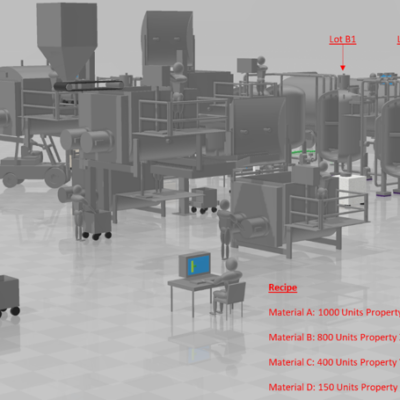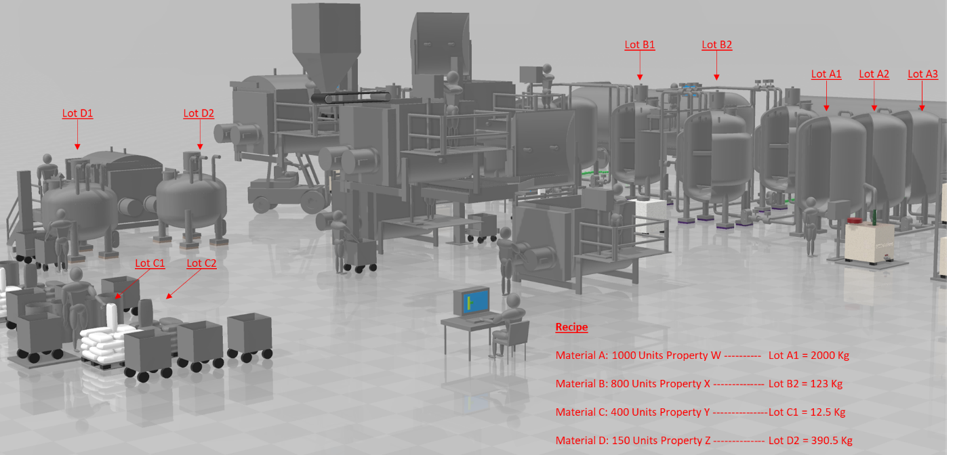News

Dosing Materials Based On Their Properties
Improving Product Quality
Often the quantities of materials required to manufacture a product are specified by weight or by volume. Recipes and procedures are created to specify the activities that need to be performed and the number of materials required.
The Setpoints for these quantities are set in the recipes based on the materials that are being used, if the material properties change significantly then these recipe quantities need to be updated once the new materials enter the production stream. This often requires tracking the material consumptions and updating the recipes at the appropriate time. i.e. late at night on Saturday once the new material is introduced to the production environment.
These new formula quantities are calculated after a lab analysis is performed of each Lot sample. The timing to introduce these new recipe parameter values can be critical to the Quality and the Cost of the product.
If for some reason the source of the expected material cannot be used because of mechanical issues or material source empty, and a new source is required; the properties of the new source may contain a material that has different properties of the intended in the active recipe. i.e. material properties being used from silo 1, tank 1, super sack 1, tote 1, pallet 1 is different from the new required source.

Fig 1 – Properties Recipe Formulation
In a modular automation system, the recipes tasks responsible for delivering materials (ISA-88 Phases) are mostly designed to deliver a specified amount of material (Kg, Lbs., Gal, Liters, etc.) Now consider, delivering material based on the properties of the material being used, this functionality can be added to the material delivery Phases and can be invoked as required by the recipe author, the recipe can be specified to deliver materials bases on a quantity (in weight or volume) or it can be specified to deliver a number of units of a material property. Therefore, the recipe formula value does not request an amount of a material but rather units of a property of the material. i.e. the quantity of sweetener required depends on the properties of the sweetener, or the amount of grain can be dynamically adjusted to compensate for material potency and moisture.
Each Material Lot-Id is analyzed for their properties, these materials are stored in specified locations (containers); when the recipe calls for this material, the system determines the source to be used and transfers the material properties information to the system. The system then dynamically calculates the amount required to meet the requested recipe properties set point. If during the addition, multiple lot IDs are required, the system will adjust the amount to deliver the units of the property set point.
This design allows recipe authors to define the unit of properties required and the system then calculates the amount to be dosed based on the lot Id of the material to be delivered. This approach allows the product to be manufactured to better meet the specification, delivering better quality, and optimizing the usage of ingredients to reduce cost.
Posted In: Bakery Industry, Batch Boosters, Beverage Industry, Chemical Industry, Distilleries, Food Industry, Life Science Industry, White Papers
